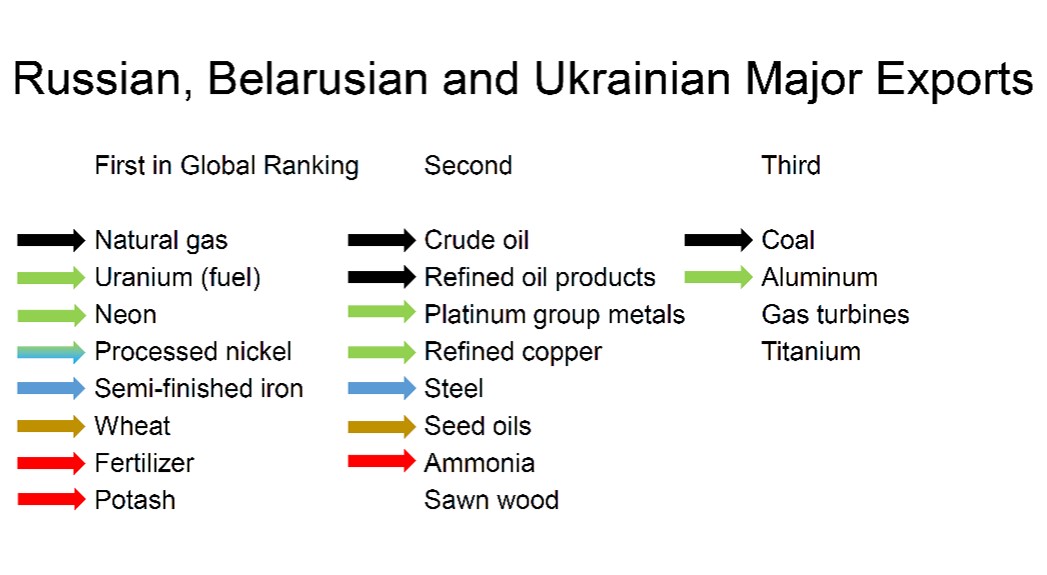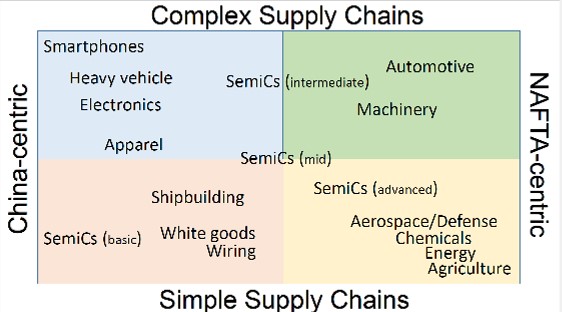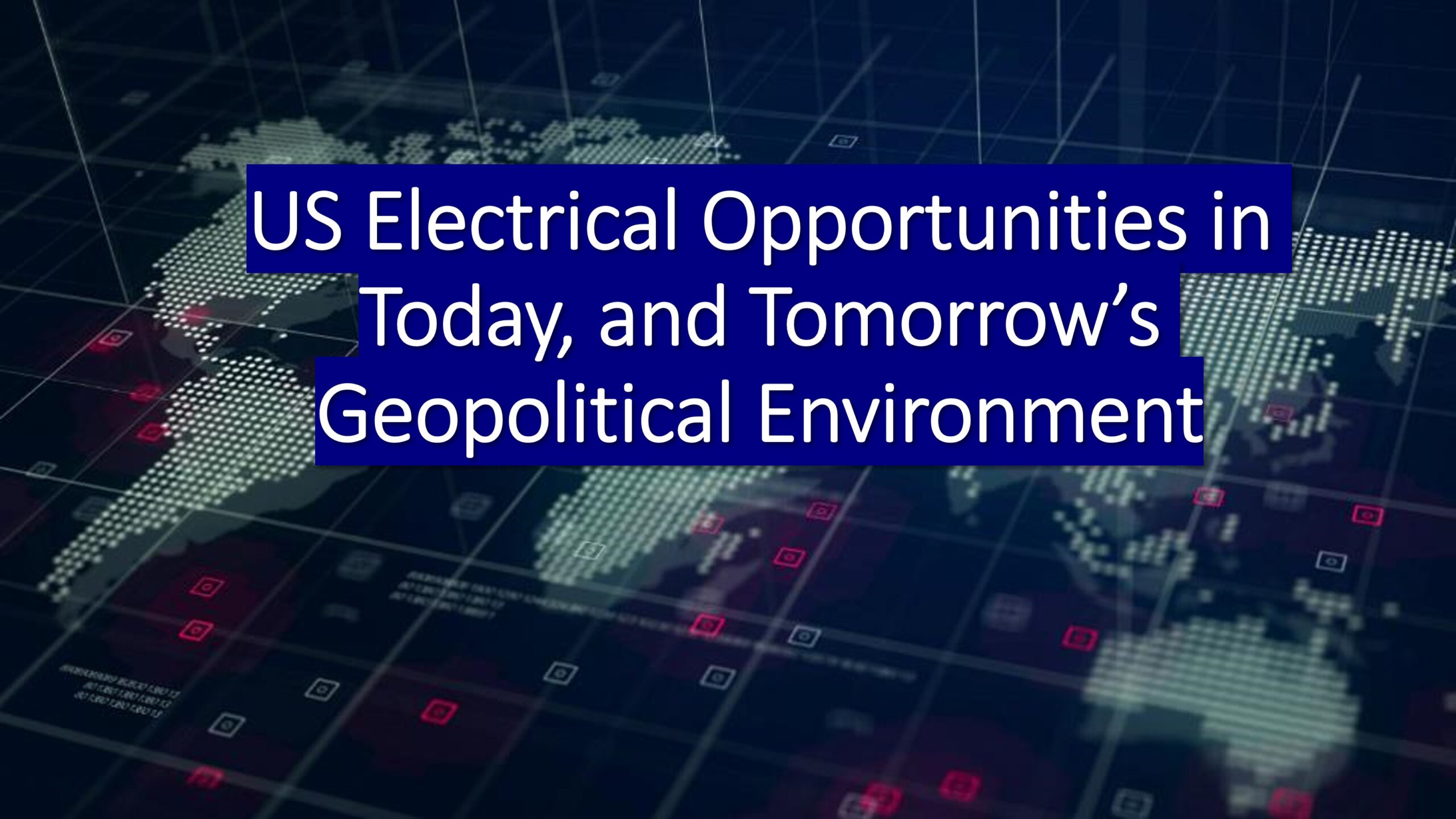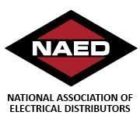Today’s Geopolitical Issues … and US Electrical Potential Opportunities
Last week I mentioned that the recent NAED National meeting had one of the best keynote speakers that NAED has had in 20+ years of attending these conferences. Peter Zeihan spoke about geopolitical issues, correlated it to population trends in a number of countries and then shared insights into what it could mean over the next 5-20 years from a macroeconomic viewpoint. His presentation was titled “Living Through the End of the World.”
While Peter did not speak to issues specific to the electrical industry, while listening to his presentation you could identify trends and consider how it could affect the electrical industry and hence generate opportunities, and challenges, for distributors and manufacturers.
The extend of these opportunities and challenges then become specific to each company based upon location, business / customer focus, product offering and the longer-term strategy (or exit plan) of a company.
Coincidentally, shortly after the conference I found a video of a similar presentation (which is called “Energy at the End of the World Seminar”, which is why it is longer) that Peter gave to a different audience. This geopolitical presentation is much longer (2 ½ hours) than the NAED presentation as it has additional information (especially about the state of the oil industry), and the individuals were able to ask questions. Here’s a link to the video.
I’ve since watched the video and aggregated that input with notes / takeaways from his NAED presentation.
I won’t recap his presentation (email me for his slides or watch the video) but consider these potential observations (knowing the foundation is in his content.)
(I would suggest signing up for YouTube premium to download the video to listen to the presentation at your leisure.)
What could today’s geopolitical environment mean for the electrical industry?
- Look at this chart which
 highlights the fossil fuels, minerals and agricultural products where Russia, Ukraine and Belarus are either #1, #2 or #3 in the world. Given the war in Ukraine and the supply disruption of these critical elements, consider the potential consequences.
highlights the fossil fuels, minerals and agricultural products where Russia, Ukraine and Belarus are either #1, #2 or #3 in the world. Given the war in Ukraine and the supply disruption of these critical elements, consider the potential consequences. -
- A fossil fuel induced recession for the rest of the world (ROW) as the US is fossil fuel independent
- Neon is used in the development / production (etching) of semi-conductors
- #2 in copper and platinum mining (which are needed for the “green” transition)
- #2 in steel mining and reportedly two-thirds of the global market for pig iron
- Nickel is needed for making stainless steel and for the “green” transition.
- #1 for production of wheat, fertilizer, and potash and #2 in ammonia.
Consider, a ROW recession, regardless of what occurs with the US market, hurts US exports. If you are an industrial distributor, especially selling to the OEM market, how could this impact your customers? You?
Notice the agricultural products on the list … basic products (a la wheat) as well as nutrients (fertilizer, ammonia, potash, etc.) and remember what you’ve heard on the media regarding food shortages in Africa, Middle East and elsewhere. While it will impact pricing here due to commodity futures, in the US we won’t have a food shortage but what could increased prices mean for the agricultural industry? Will there be a need for increased production? Will farmers spend more on equipment? Need more productive equipment? Will agriculture production increase to support an export market?
According to Peter, the fossil fuel issue will require a minimum of three years to recover. What could this mean for the oil and gas industry? For companies in the Bakken Shale? The Permian Basin? While oil / gas companies have curtailed production because of ESG initiatives and “protests”, will they eventually reinvest into their fields (especially shale since reportedly this can be brought online “faster”) with unleaded gas at $5-8 / gallon and jet fuel expected to go even higher? Think about the cost of diesel fuel? How will these increased costs affect distributor operations as well as manufacturer policies and transportation costs? Will both parties return to thoughts from years ago about fuel surcharges? Minimum order size?
The US shale fields are between the Rocky Mountains and the Appalachians, which should help selected distributors and manufacturers focus their efforts / resource deployment.
If you look at the slides, take a look at where shale is and the food (in) security slides. The US is secure in both. One of the few countries.
- Peter talked about population trends in a number of countries and how these are driving government leaders (in some cases) to think about their country’s initiatives (and their legacies). The slides have charts for a number of countries, however, consider:
- Baby Boomers, which was a large generation, are retiring. Many took early retirement due to COVID (during or shortly thereafter). Who is replacing them? Businesses were not prepared for many retiring at the same time.
- GenX is the smallest generation in US history … and typically this is the group that would replace Baby Boomers on org charts. This is one of the reason why labor costs are increasing.
- Millennials were positioned as in two groups. Some have a “different” work style and others were described as “collaborators”, in general, but most are not seasoned for jumping into more senior roles.
- And then there are the Zoomers, who were born after 2005 and are too young to impact today’s workforce however will have much different views as they enter the workforce and view “work”, especially since many have seen COVID, are much more technologically aware, more focused on “green” and have different expectations of themselves and companies.
All of the above has significant impact on employment trends for the next 25 years as the Zoomers and the next group (children of Millennials) develop.
- Capital costs are expected to increase due to a reduction in capital to be invested (by those retiring.) This gets to the issue of the top 1% controlling 50% of assets. This can impact future cost of capital for distributors and manufacturers to support investments. This will further support industry consolidation. People / owners retire and want access to the capital, therefore sell, unless they convert the business to an ESOP as others will be challenged in gathering capital to make an investment to acquire interests in a company (unless gifted.)
- The change in workforce in China, Peter believes, will have an impact on China’s ability to remain the low-cost manufacturing hub. Their population is getting older and less people to fund an aging workforce. This may lead to more automation there. At the same time, there continue to be tension between the governments with part of this related to China’s pursuit of Taiwan. Further, China’s zero-tolerance policy for COVID essentially ensures ongoing supply chain concerns. Given all of this, Peter foresees companies seeking to shorten their supply chains to be closer to their consumers. This could mean manufacturing closer to the customer. For electrical distributors this could mean greater industrial concentration in the US (recently there have been a number of large EV auto manufacturer announcements in Indiana, Georgia and North Carolina) as well as companies seeking to manufacturer in northern / central Mexico.
- Given labor shortages, coupled with reduced immigration, and the population dynamic, expect that the current labor shortages to be long-term. Companies should consider automating repetitive roles as much of possible. This has implications for companies that represent automation distributors and industrial MRO distributors. For construction-oriented distributors there will be more industrial contractor work as well as the need for additional commercial construction surrounding industrial facilities. For distributors of all types, a challenging labor force should motivate more to automate processes within their companies.
- China excels in “Simple Supply
 Chains” (left of the chart). The right is more “NAFTA-centric”. The implication here is that companies will seek to bring these “more basic” production-oriented manufactured items closer to consumers. The issue is “value-added” to the product. The NAFTA community can manufacturer more cost-effectively based upon automation, fuel costs and other business dynamics. What companies will move where?
Chains” (left of the chart). The right is more “NAFTA-centric”. The implication here is that companies will seek to bring these “more basic” production-oriented manufactured items closer to consumers. The issue is “value-added” to the product. The NAFTA community can manufacturer more cost-effectively based upon automation, fuel costs and other business dynamics. What companies will move where?
- In the slides, and the video, Peter explains his thoughts regarding the challenges China will / may face.
- Unfortunately, while the US government wants to reduce inflation, and the Fed will try, it’s expected that inflation could be “high” (compared to what is a good question as remember, it was targeted at 2% so it is high based upon recent history but was higher years ago) for potentially 5 years. Why? The affects, and after-affects, of the Ukraine war (consider who pays for rebuilding Ukraine if Ukraine wins and the impact if Russia wins, the area is devastated, and sanctions stay. Further, the impact of the loss of Russian crude oil and natural gas has longer-term implications.)
- Obviously, with the war in Ukraine, the defense complex will be a growth segment in the country. The defense manufacturers directly but there are many other companies (again, considered industrial companies, usually OEMs) that provide components to defense companies.
- Regarding Green Tech …
- Solar is currently only 1.5% of total global energy usage, as of 2020. Non-carbon fuels were only 17% of global energy usage in 2020.
- “Carbon debt” – the carbon cost of producing “non-carbon” global energy (i.e., solar, wind, EV, etc.)
- Only 7 countries can do non-carbon at scale and not incur carbon debt.
- Copper, Nickel, and Cobalt – Russia is #1-3 producer, but all are needed for electric cars. This could hamper the migration to the EV market but, with the amount of government money behind the charging infrastructure, the high cost of gas which will drive consumer demand and the “green” movement, expect continued adoption. Plus, a number of new EV manufacturing plants are being developed over the next few years, along with battery facilities.
- Solar is currently only 1.5% of total global energy usage, as of 2020. Non-carbon fuels were only 17% of global energy usage in 2020.
- The video shares more information about the future importance, strategic value, and usage for oil and natural gas. If a portion of his predictions come true, there will be much more growth opportunities for companies supporting these sectors.
- If you watch the video, you’ll see whom the audience is and will understand why, in the last 45 minutes of the video (of which 30 minutes is Q&A) Peter speaks much about the oil industry and how that impacts security longer-term (with projections for two other wars). Longer-term he sees the end of global oil pricing as the US develops more shale and becomes more self-sufficient. He expects this to occur within 3 years but there is a political dynamic that also needs to occur that will restrict the US exporting its oil.
At the end, in the current, and foreseen, geopolitical environment Peter Zeihan is positive, long-term, about the US economy although, after you listen to the presentation, it is disconcerting. But the reality is, this is his projection and there will be things that change. They key, IMHO, is considering how some of the trends could impact “you”.























